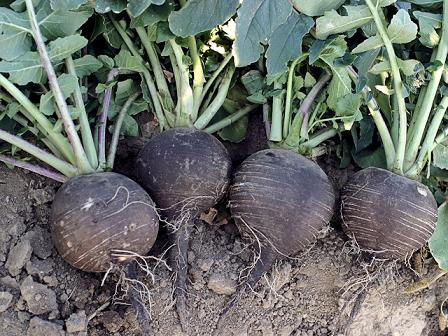 If you have a garden, albeit small, it is not surprising that you were interested in the question - when to plant black radish in 2017. Such a useful vegetable must be present on the menu. And God himself commanded them for the winter, as they say. Do not neglect the radish - the most useful and the most burning is black radish, the milder variety is Margelan, the lightest, juiciest, not contraindicated to anyone, not having bitterness - daikon. Let's look at when to plant a radish, what types of radish, how to apply it, and which varieties are most pleasant for us in terms of usefulness and taste.
If you have a garden, albeit small, it is not surprising that you were interested in the question - when to plant black radish in 2017. Such a useful vegetable must be present on the menu. And God himself commanded them for the winter, as they say. Do not neglect the radish - the most useful and the most burning is black radish, the milder variety is Margelan, the lightest, juiciest, not contraindicated to anyone, not having bitterness - daikon. Let's look at when to plant a radish, what types of radish, how to apply it, and which varieties are most pleasant for us in terms of usefulness and taste.
If tortured pests in the garden, find out how to get rid of a bear folk remedies.
Black radish
The most famous since ancient times of our ancestors is black, bitter, sharp, it is not suitable for everyone, especially who has a stomach problem, it is contraindicated for old people. But - it is the most useful, the set of vitamins and minerals in it is amazing. If you do not have contraindications from the stomach and intestines, you need this one.
Ancient Greek and Roman healers in full swing used black radish juice to treat all sorts of ailments. Radish with honey is good for colds, it treated the kidneys and liver, diabetes, used its juice to heal wounds, and as a natural bactericidal agent. Black radish stimulates the production of gastric juice and bile.
Margelan radish
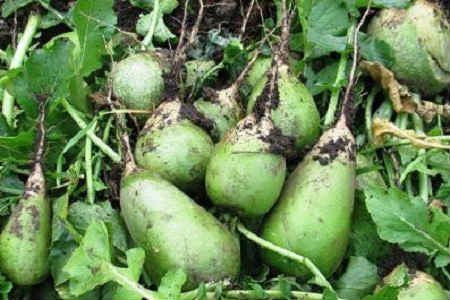
This type of radish is very juicy, quick-ripe, has a green color, and is suitable for almost everyone. It can be used in different salads, it goes well with tomatoes and cucumbers, with various herbs, because of it various healthy dishes are prepared.
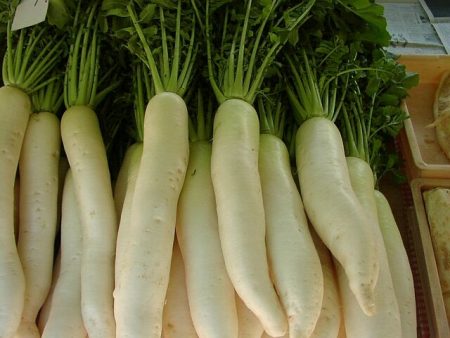
Daikon is the most tender type of radish, has a white color, and a delicate (as opposed to black) taste. The last two species have less beneficial properties, but since they are more delicate and you can eat more of them, respectively, you can get the same benefit from them, simply by eating it in large quantities, which is healthy, tasty, and is not contraindicated to anyone.
When to plant a radish
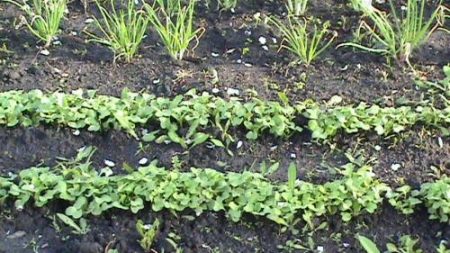
Early varieties are planted in spring, closer to summer, and intended for winter storage - by the end of summer. For radish, you need to choose a sunny area, without increased humidity, but not dry. The predecessors that will favorably affect the harvest of radishes - cucumbers and tomatoes, potatoes and legumes, are also good to plant after onions and carrots. The land does not fit where cabbage and radish grew before.
Having picked up a site, apply fertilizers (except for fresh manure), spill the bed well. Make grooves, and sow the radish seeds not deep, only up to 2 cm deep. Then, bending the grooves, again carefully spill out of the watering can so as not to wash the plants from the soil. Keep the bed wet until the radish comes up. The next stage - it needs to be thinned out and fertilized. The second feeding and thinning - in a month. Urea with superphosphate and potassium chloride are suitable for fertilizer. Radish responds well to drugs such as Darina-6 or Apricola, which are specifically designed for root crops, and contribute to an excellent harvest. If the soil is clay, its structure needs to be loosened, making peat, if it is too poor - although a couple of kilograms of compost per square meter should be used. You need to water often, so that the soil does not dry out, then the radish will be glorious.
If the mounds of freshly dug noticed on the site, urgently find out how to get rid of moles in the country in a simple way.
It is necessary to plant winter varieties without delay, focusing on your climate, it is better in the middle of summer so that the frost does not catch the radish, because it will immediately become stiff in minus weather.An interesting tip: in order to get more juicy root crops, you need to grab the radish by the tops and swing it a bit to break off the side roots. So the fetus will receive more nutrition.
Radish Care
All types of radishes require the same care - watering, thinning, top dressing. When the seedlings rise, you need to sprinkle with ash, which will protect them from pests, remove the most stunted fruits without pity, leave the strongest, whole fruits without a single wormhole for the winter. The optimal size is from 4 to 6 cm, not more, such fruits are best stored. After watering or past rain, be sure to loosen the soil - the radish will begin to choke without oxygen.
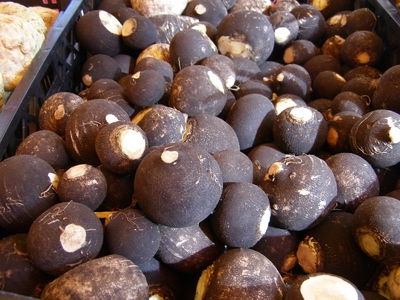
For the winter, having unscrewed the tops and cleared of the earth, select the most healthy root crops and put them in boxes in the basement. You can in the sand, so they are better preserved. But the temperature there should be in the region of 1-2 degrees with a plus.
Read also: how to grow a watermelon in the Moscow region in open ground.
